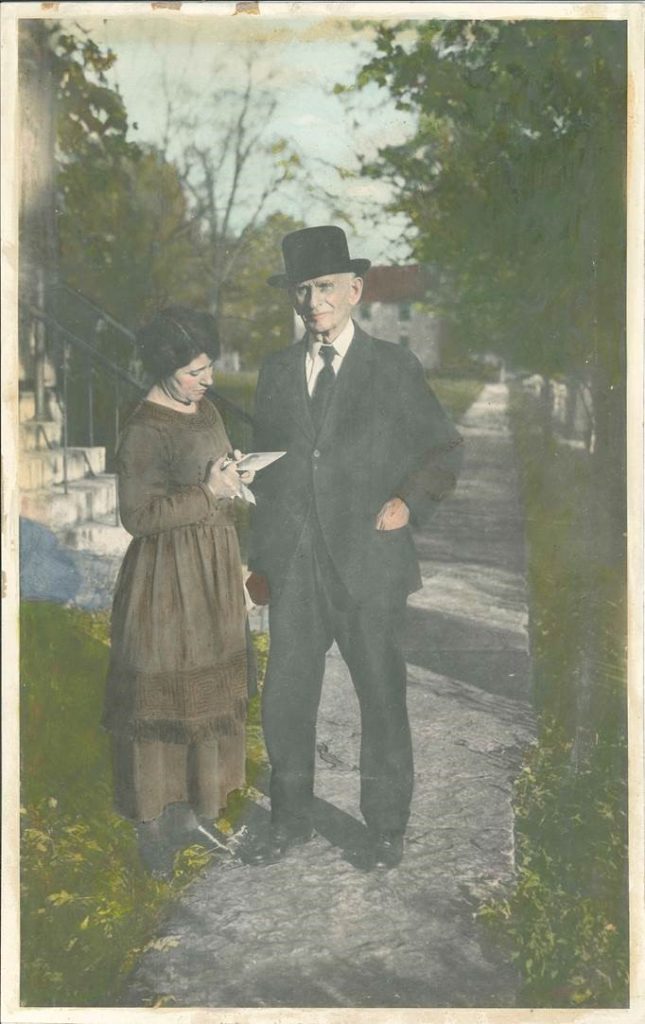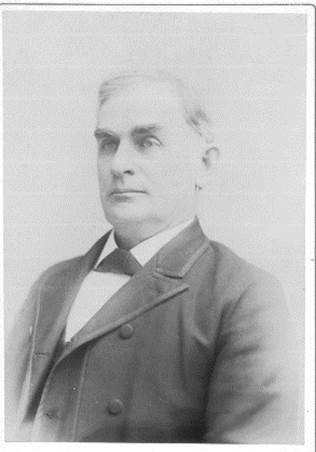Aaron Genton, Collections Manager
While recently going through some boxes in the library, I came across this really interesting item in a folder.

It is a photo of an elderly William Pennebaker (a Pleasant Hill Shaker) standing on the stone walk in front of the Old Stone Shop (you can see the Farm Deacon’s Shop looming in the background) alongside Letcher Mathews, who was a caretaker/housekeeper for Pennebaker in his later years.
It has also been hand-colored, a popular process employed to make black-and-white images more “realistic” by adding color using a variety of mediums like dyes, watercolors, oil paint, crayons, and pastels. I’ll let you decide how realistic this one looks – if you ask me though, they didn’t do William any favors. I can’t be certain on the date of the photo, but William Pennebaker died in 1922, so my guess is that it isn’t too far off from that year.
As I was looking at the image, I became interested in the item that Letcher Mathews is holding in her hands. A high-resolution scan was helpful in getting a close-up view of what appears to be a photograph. And as I looked at it, I realized that I had seen this photo before.
From what I can tell, this could be a studio photograph of William Pennebaker that is currently in the collection of the Winterthur Musuem (which has a pretty considerable Shaker collection). Here’s a side-by-side comparison of these images – what do you think?


Courtesy, the Winterthur Library:
The Edward Deming Andrews Memorial Shaker Collection
The original photo indicates that it was taken in a studio in Washington, D.C., but there’s not really any other information about it. Nor is there much record of why he visited D.C., or how often, though I’ve found one reference to it in the surviving journals. So this is an area ripe for further research!
Beyond that, I’m trying to imagine what the conversation sounded like as they looked over this photo of William in his younger days. If anyone gets inspired, send us your best caption idea for the hand-colored photo!
agenton@shakervillageky.org




